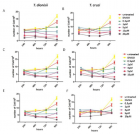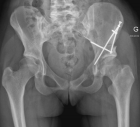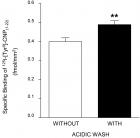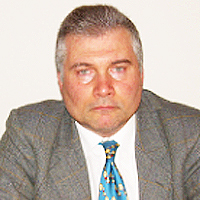Abstract
Mini Review
Phytochemicals candidates as promising preventives and/or curatives for COVID-19 Infection: A brief review
Selma Hamimed*, Nejib Jebli, Rayene Hamimed, Ahmed Landoulsi and Abdelwaheb Chatti
Published: 23 March, 2021 | Volume 5 - Issue 1 | Pages: 001-006
The outbreak of new coronavirus acute respiratory disease (SARS-CoV-2) has been a major global challenge for the scientific community to save humanity. While, the unviability of the vaccine keeps most classes of society, especially African countries, suffer from the healthcare problem. Conventional medicine plants become the alternative method for the therapeutic because it contains valuable bioactive compounds. This brief review devoted the importance of medicinal plants such as Citrus, olive, garlic, ginger, green tea, woad, broad-leaf privet, Japanese torreya, and saffron crocus, by their antiviral effects (anti-SARS coronavirus, anti-HSV, and anti-HIV diseases) and their promising uses as probable boosters of the immune and anti-inflammatory response from SARS-CoV-2 infection. Based on scientific reports, bioactive compounds could inhibit 3-chymotrypsin-like cysteine protease and human protein ACE2, where these facts can be attractive to develop effective drugs.
Read Full Article HTML DOI: 10.29328/journal.ibm.1001019 Cite this Article Read Full Article PDF
Keywords:
COVID-19; Phytochemicals; Traditional medicinal plants; Quercetin; Oleuropein; Crocin
References
- Chen H, Du Q. Potential natural compounds for preventing 2019-nCoV infection. 2020; 1-16.
- Africa CDC. https://au.int/fr/covid19
- Ananlysis-COVID-19 pandemic: Great danger awaits Africa. 2020. https://www.aa.com.tr/en/africa/analysis-covid-19-pandemic-great-danger-awaits- africa/1789840
- Qamar MT, Alqahtani SM, Alamri MA, Chen LL. Structural basis of SARS-CoV-2 3CLpro and anti-COVID-19 drug discovery from medicinal plants. J Pharm Anal. 2020; 10: 313-319. PubMed: https://pubmed.ncbi.nlm.nih.gov/32296570/
- Sun N, Wong W, Guo J. Prediction of potential 3CLpro-targeting anti-SARS-CoV-2 compounds from Chinese Medicine. 2020; 1-13.
- Khaerunnisa S, Kurniawan H, Awaluddin R, Suhartati S, Soetjipto S. Potential inhibitor of COVID-19 main protease (Mpro) from several medicinal plant compounds by Molecular Docking Study. 2020; 1-14.
- Letko M, Munster V. Functional assessment of cell entry and receptor usage for lineage B? -coronaviruses, including 2019-nCoV. BioRxiv. 2020; 1-26.
- Frie K, Gbinigie K. Chloroquine and hydroxychloroquine: Current evidence for their effectiveness in treating COVID-19. CEBM-University of Oxford. 2020.
- Jassim SAA, Naji MA. Novel antiviral agents: a medicinal plant perspective. J Appl Microbiol. 2003; 95: 412-427. PubMed: https://pubmed.ncbi.nlm.nih.gov/12911688/
- Amber R, Adnan M, Tariq A, Mussarat S. A review on antiviral activity of the Himalayan medicinal plants traditionally used to treat bronchitis and related symptoms. J Pharm Pharmacol. 2016; 69: 109-122. PubMed: https://pubmed.ncbi.nlm.nih.gov/27905101/
- Cinatl J, Morgenstern B, Bauer G, Chandra P, Rabenau H, et al. Glycyrrhizin, an active component of liquorice roots, and replication of SARS-associated coronavirus. Lancet. 2003; 361: 2045-2046. PubMed: https://pubmed.ncbi.nlm.nih.gov/12814717/
- Chen Z, Nakamura T. Statistical evidence for the usefulness of Chinese medicine in the treatment of SARS Phytother. Res J. 2004; 18: 592-594. PubMed: https://pubmed.ncbi.nlm.nih.gov/15305324/
- Utomo RY, Ikawati M, Meiyanto E. Revealing the potency of Citrus and galangal constituents to halt SARS-CoV-2 infection. 2020; 1-8.
- Hamimed S, Jebli N, Sellami H, Landoulsi A, Chatti A. Dual valorization of olive mill wastewater by bio-nanosynthesis of magnesium oxide and Yarrowia lipolytica biomass production. Chem. Biodivers. 2020; 17: e1900608. PubMed: https://pubmed.ncbi.nlm.nih.gov/32017363/
- Rafiei S, Rezatofighi SE, Ardakani MR, Madadgar O. In vitro anti-foot-and-mouth disease virus activity of magnesium oxide nanoparticles. IET. Nanobiotechnol. 2015; 9: 247-251. PubMed: https://pubmed.ncbi.nlm.nih.gov/26435276/
- Lin CW, Tsai FJ, Tsai CH, Lai CC, Wan L, et al. Anti-SARS coronavirus 3C-like protease effects of Isatis indigotica root and plant-derived phenolic compounds. Antiviral Res. 2005; 68: 36-42. PubMed: https://pubmed.ncbi.nlm.nih.gov/16115693/
- Cheng L, Zheng W, Li M, Huang J, Bao S, et al. Citrus fruits are rich in flavonoids for immune-regulation and potential targeting ACE2. 2020; 1-13.
- Deng YF, Aluko RE, Jin Q, Zhang Y, Yuan LJ. Inhibitory activities of baicalin against renin and angiotensin-converting enzyme. Pharm Bio. 2011; l50: 401-406. PubMed: https://pubmed.ncbi.nlm.nih.gov/22136493/
- Yu MS, Lee J, Lee JM, Kim Y, Chin YW, et al. Identification of myricetin and scutellarein as novel chemical inhibitors of the SARS coronavirus helicase nsP13. Bioorg Med Chem Lett. 2012; 22: 4049-4054. PubMed: https://pubmed.ncbi.nlm.nih.gov/22578462/
- Li S, Chen C, Zhang H, Guo H, Wang H, et al. Identification of natural compounds with antiviral activities against SARS-associated coronavirus. Antivir Res. 2005; 67: 18-23. PubMed: https://pubmed.ncbi.nlm.nih.gov/15885816/
- Lau KM, Lee KM, Koon CM, Cheung CS, Lau CP, et al. Immunomodulatory and anti?SARS activities of Houttuynia cordata. J Ethnopharmacol. 2008; 118: 79-85. PubMed: https://pubmed.ncbi.nlm.nih.gov/18479853/
- Ryu YB, Jeong HJ, Kim JH, Kim YM, Park JY, et al. Biflavonoids from Torreya nucifera displaying SARS CoV 3CL(pro) inhibition. Bioorg Med Chem. 2010; 18: 7940-7947. PubMed: https://pubmed.ncbi.nlm.nih.gov/20934345/
- Guinobert I, Bardot V, Berthomier L, Ripoche I, Faivre C, et al. In vitro virucidal activity of an extract of cypress on human and bovine viruses. Phytothérapie. 2018; 16: 281-289.
- Loizzo M, Saab A, Tundis R, Menichini F, Lampronti I, et al. Phytochemical analysis and in vitro antiviral activities of the essential oils of seven lebanon species. Chem Biodivers. 2008; 5: 461-470. PubMed: https://pubmed.ncbi.nlm.nih.gov/18357554/
- Aanouz I, Belhassan A, El-Khatabi K, Lakhlifi T, El-ldrissi M, et al. Moroccan Medicinal plants as inhibitors against SARS-CoV-2 main protease: Computational investigations. J Biomol Struct Dyn. 2020; 6: 001-009. PubMed: https://pubmed.ncbi.nlm.nih.gov/32306860/
- Mohd Kasim NA, Ain Abu Bakar N, Ahmad R, Abd Rahim IN, Hasrah Abdul Rahman T, et al. Crocus Sativus and Its Active Compound, Crocin Inhibits the Endothelial Activation and Monocyte-Endothelial Cells Interaction in Stimulated Human Coronary Artery Endothelial Cells. BioRxiv. 2020; 1-23.
- Prasansuklab A, Theerasrib A, Rangsinth P, Sillapachaiyaporn S, Chuchawankul S, et al. Anti-COVID-19 drug candidates: A review on potential biological activities of natural products in the management of new coronavirus infection. J Tradit Complement Med. 2021; 11: 144-157.
- Rahman MT, Idid SZ. Can Zn Be a Critical Element in COVID-19 Treatment? Biological Trace Element Research. 2020. PubMed: https://pubmed.ncbi.nlm.nih.gov/32458149/
- Pejin B, Iodice C, Tommonaro G, De Rosa S. Synthesis and Biological Activities of Thio-avarol Derivatives. J Nat Prod. 2008; 71: 1850-1853. PubMed: https://pubmed.ncbi.nlm.nih.gov/19007183/
- Tommonaro G, García-Font N, Vitale RM, Pejin B, Iodice C, et al. Avarol derivatives as competitive AChE inhibitors, non hepatotoxic and neuroprotective agents for Alzheimer's disease. Eur J Med Chem. 2016; 122: 326-338. PubMed: https://pubmed.ncbi.nlm.nih.gov/27376495/
- Ding HW, Huang AL, Zhang YL, Li B, Huang C, et al. Design, synthesis and biological evaluation of hesperetin derivatives as potent anti-inflammatory agent. Fitoterapia. 2017; 121: 212-222. PubMed: https://pubmed.ncbi.nlm.nih.gov/28774689/
- Paredes A, Alzuru M, Mendez J, Rodríguez-Ortega M. Anti-Sindbis Activity of Flavanones Hesperetin and Naringenin. Biol Pharm Bull. 2003; 26: 108-109. PubMed: https://pubmed.ncbi.nlm.nih.gov/12520185/
- Tanner JA, Zheng BJ, Zhou J. The adamantane-derived bananins are potent inhibitors of the helicase activities and replication of SARS coronavirus. Chem Biol. 2005; 12: 303-311. PubMed: https://pubmed.ncbi.nlm.nih.gov/15797214/
- Nafisi S, Shadaloi A, Feizbakhsh A, Tajmir-Riahi HA. RNA binding to antioxidant flavonoids. J Photoch Photobio B. 2009; 94: 1-7. PubMed: https://pubmed.ncbi.nlm.nih.gov/18922698/
- Chiang LC, Chiang W, Chang MY, Ng LT, Lin CC. Antiviral activity of Plantago major extracts and related compounds in vitro. Antivir Res. 2002; 55: 53-62. PubMed: https://pubmed.ncbi.nlm.nih.gov/12076751/
- Yang J, Guo J, Yuan J. In vitro antioxidant properties of rutin. LWT-Food Sci Technol. 2008; 41: 1060-1066.
- Haris Omar S. Oleuropein in Olive and its Pharmacological Effects. Sci Pharm. 2010; 78: 133-154. PubMed: https://pubmed.ncbi.nlm.nih.gov/21179340/
- Samet I, Villareal MO, Motojima H, Han J, Sayadi S, et al. Olive leaf components apigenin 7-glucoside and luteolin 7-glucoside direct human hematopoietic stem cell differentiation towards erythroid lineage. Differentiation. 2015; 89: 146-155. PubMed: https://pubmed.ncbi.nlm.nih.gov/26299581/
- Ilić D, Nikoli V, Stankovi M, Nikoli L, Stanojevi L, et al. A Transformation of synthetic allicin: the influence of ultrasound, microwaves, different solvents and temperatures, and the products isolation. Sci World J. 2012; 2012: 561823. PubMed: https://pubmed.ncbi.nlm.nih.gov/22629145/
- Li J, Tian C, Xia Y, Mutanda I, Wang K, et al. Production of plant-specific flavones baicalein and scutellarein in an engineered E. coli from available phenylalanine and tyrosine. Metab Eng. 2018; 124-133. PubMed: https://pubmed.ncbi.nlm.nih.gov/30496827/
- Onu PN. Evaluation of two herbal spices as feed additives for finisher broilers. Biotech Animal Husbandry. 2010; 26: 383-392.
- Kanakis CD, Tarantilis PA, Polissiou MG, Diamantoglou S, Tajmir-Riahi HA. DNA Interaction with Naturally Occurring Antioxidant Flavonoids Quercetin, Kaempferol, and Delphinidin. J Biomol Struct Dyn. 2005; 22: 719-724. PubMed: https://pubmed.ncbi.nlm.nih.gov/15842176/
- Chen F, Chan KH, Jiang Y, Kao RY, Lu HT, et al. In vitro susceptibility of 10 clinical isolates of SARS coronavirus to selected antiviral compounds. J Clin Virol. 2004; 31: 69-75. PubMed: https://pubmed.ncbi.nlm.nih.gov/15288617/
Figures:
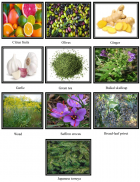
Figure 1
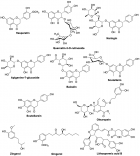
Figure 2

Figure 3
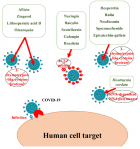
Figure 4
Similar Articles
-
Phytochemicals candidates as promising preventives and/or curatives for COVID-19 Infection: A brief reviewSelma Hamimed*,Nejib Jebli,Rayene Hamimed,Ahmed Landoulsi,Abdelwaheb Chatti. Phytochemicals candidates as promising preventives and/or curatives for COVID-19 Infection: A brief review. . 2021 doi: 10.29328/journal.ibm.1001019; 5: 001-006
Recently Viewed
-
Clinical and Histopathological Mismatch: A Case Report of Acral FibromyxomaMonica Mishra*,Kailas Mulsange,Gunvanti Rathod,Deepthi Konda. Clinical and Histopathological Mismatch: A Case Report of Acral Fibromyxoma. Arch Pathol Clin Res. 2025: doi: 10.29328/journal.apcr.1001045; 9: 005-007
-
Unconventional powder method is a useful technique to determine the latent fingerprint impressionsHarshita Niranjan,Shweta Rai,Kapil Raikwar,Chanchal Kamle,Rakesh Mia*. Unconventional powder method is a useful technique to determine the latent fingerprint impressions. J Forensic Sci Res. 2022: doi: 10.29328/journal.jfsr.1001035; 6: 045-048
-
Doppler Evaluation of Renal Vessels in Pediatric Patients with Relapse and Remission in Different Categories of Nephrotic SyndromeAmit Nandan Dhar Dwivedi*, Srishti Sharma, OP Mishra, Girish Singh. Doppler Evaluation of Renal Vessels in Pediatric Patients with Relapse and Remission in Different Categories of Nephrotic Syndrome. J Clini Nephrol. 2023: doi: 10.29328/journal.jcn.1001112; 7: 067-072
-
Atlantoaxial subluxation in the pediatric patient: Case series and literature reviewCatherine A Mazzola*,Catherine Christie,Isabel A Snee,Hamail Iqbal. Atlantoaxial subluxation in the pediatric patient: Case series and literature review. J Neurosci Neurol Disord. 2020: doi: 10.29328/journal.jnnd.1001037; 4: 069-074
-
Intelligent Design of Ecological Furniture in Risk Areas based on Artificial SimulationTorres del Salto Rommy Adelfa*, Bryan Alfonso Colorado Pástor*. Intelligent Design of Ecological Furniture in Risk Areas based on Artificial Simulation. Arch Surg Clin Res. 2024: doi: 10.29328/journal.ascr.1001083; 8: 062-068
Most Viewed
-
Evaluation of Biostimulants Based on Recovered Protein Hydrolysates from Animal By-products as Plant Growth EnhancersH Pérez-Aguilar*, M Lacruz-Asaro, F Arán-Ais. Evaluation of Biostimulants Based on Recovered Protein Hydrolysates from Animal By-products as Plant Growth Enhancers. J Plant Sci Phytopathol. 2023 doi: 10.29328/journal.jpsp.1001104; 7: 042-047
-
Sinonasal Myxoma Extending into the Orbit in a 4-Year Old: A Case PresentationJulian A Purrinos*, Ramzi Younis. Sinonasal Myxoma Extending into the Orbit in a 4-Year Old: A Case Presentation. Arch Case Rep. 2024 doi: 10.29328/journal.acr.1001099; 8: 075-077
-
Feasibility study of magnetic sensing for detecting single-neuron action potentialsDenis Tonini,Kai Wu,Renata Saha,Jian-Ping Wang*. Feasibility study of magnetic sensing for detecting single-neuron action potentials. Ann Biomed Sci Eng. 2022 doi: 10.29328/journal.abse.1001018; 6: 019-029
-
Pediatric Dysgerminoma: Unveiling a Rare Ovarian TumorFaten Limaiem*, Khalil Saffar, Ahmed Halouani. Pediatric Dysgerminoma: Unveiling a Rare Ovarian Tumor. Arch Case Rep. 2024 doi: 10.29328/journal.acr.1001087; 8: 010-013
-
Physical activity can change the physiological and psychological circumstances during COVID-19 pandemic: A narrative reviewKhashayar Maroufi*. Physical activity can change the physiological and psychological circumstances during COVID-19 pandemic: A narrative review. J Sports Med Ther. 2021 doi: 10.29328/journal.jsmt.1001051; 6: 001-007

HSPI: We're glad you're here. Please click "create a new Query" if you are a new visitor to our website and need further information from us.
If you are already a member of our network and need to keep track of any developments regarding a question you have already submitted, click "take me to my Query."






